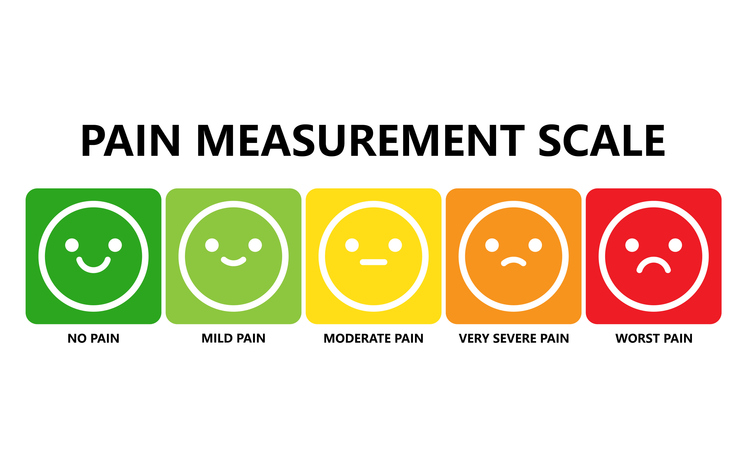Pain
The McGill Pain Questionnaire

The McGill pain questionnaire, or MPQ, is one of the most widely used multidimensional pain scales in the world. In the MPQ, the evaluation of pain is divided into three categories: sensory, affective and evaluative. The questionnaire is self-reported and allows individuals to describe the quality and intensity of their pain by using 78 adjectives in 20 different sections. This pain scale demonstrates that different pain syndromes/conditions can be consistently described with specific groups of adjectives. It is not only used to treat current pain and monitor chronic pain, but also helps determine the effectiveness of any past interventions for the same type of pain.
The McGill pain questionnaire was developed in 1971 by Dr. Melzack and Dr. Torgerson at McGill University in Montreal, Canada. Since its introduction in 1975, it has been used in over 500 research studies and has been translated into 18 different languages. It is considered valid, reliable, consistent, useful and quick to complete.
Sensory portion
There are 20 different categories on the MPQ to describe pain. A point value, varying from one to five, is given to each word. This portion of the questionnaire is used to describe how the pain feels in the present moment while the questionnaire is being answered. Some of the categories include, but are not limited to, the following:
- Temporal
- Spatial
- Constrictive pressure
- Thermal
- Brightness
- Dullness
- Sensory miscellaneous (consists of descriptors like tender, taut, rasping and splitting)
- Tension
- Autonomic
Affective portion
Affective descriptors are used to understand how an individual’s pain changes with time. It also tracks changes in habits or environment and if they have any influence on the pain rating. The MPQ asks about how alcohol, stimulants, depressants, exercise and weather affect an individual’s pain levels. It also goes more in-depth to decipher if distraction lessens the pain.
Evaluative portion
The evaluative portion of the MPQ gauges how strong the pain feels. It asks six questions. For example, "What word describes your pain right now?" or "Which word describes your pain at its worst?". These questions are then answered using a one to five point system: one point for mild, two for discomfort, etc.
Interpretation of the McGill pain questionnaire
The interpretation of the questionnaire is pretty basic: the higher the score, the higher the pain level. The maximum score an individual can reach on the MPQ is 78. According to the questionnaire, a person with a score of 0 effectively does not experience pain. A person with a high score, nearer to the highest score of 78, more than likely deals with chronic pain daily.


















